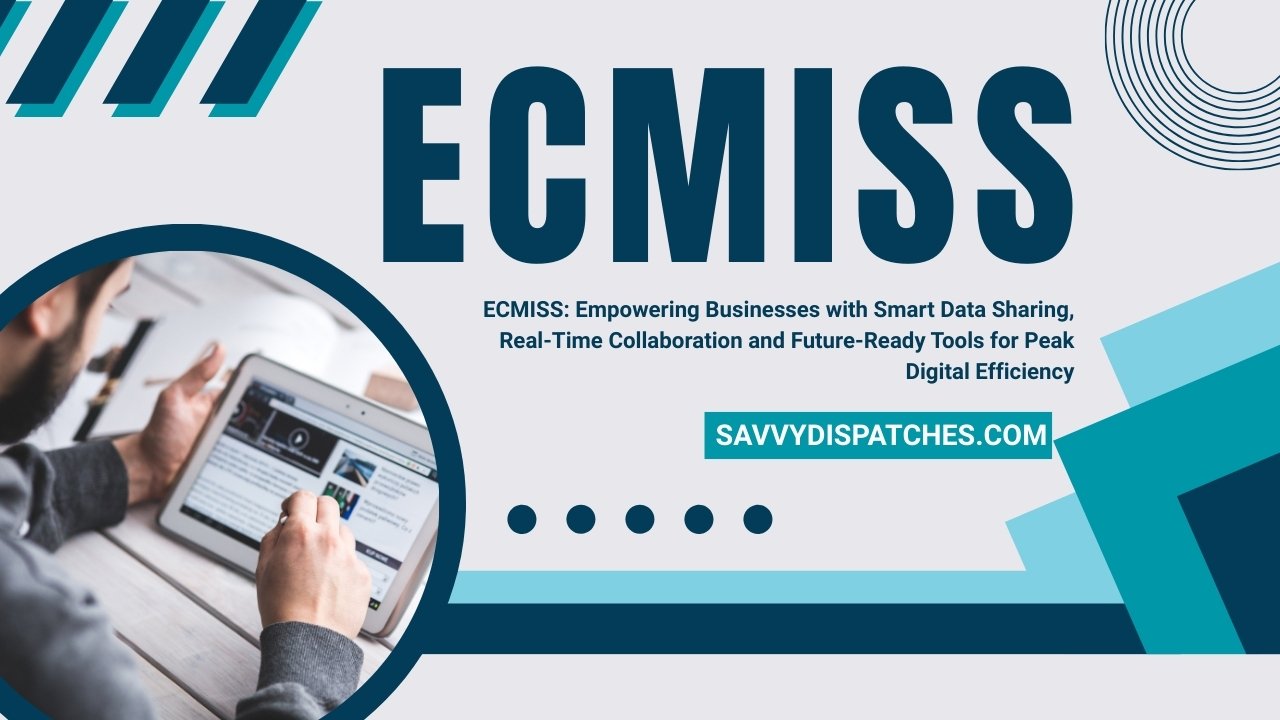Tech
Vulnerability Assessments’ Function in Contemporary Cybersecurity

Vulnerability assessments have emerged as a proactive pillar of cybersecurity strategy, offering a sense of relaxation and security in a time of constant and ever-changing digital threats. Regardless of their size or industry, organizations are continuously at risk from cyber attacks that can exploit weaknesses in their systems. Conducting vulnerability assessments is fundamental to identifying these potential entry points before malicious actors can leverage them. In addition to safeguarding sensitive data, this proactive strategy helps businesses avoid profound financial loss and harm to their brand.
The process thoroughly examines system components, including networks, software, and hardware. By identifying and managing vulnerabilities, organizations are not just reacting to potential threats but proactively equipping themselves to implement solutions and security measures that prevent unauthorized access. The main objective is to keep one step ahead of possible attacks and protect digital environments against intrusions, providing a sense of empowerment and control in the face of cyber risks.
Vulnerability Assessment Types
Vulnerability assessments come in many shapes and sizes, each tailored to a specific cybersecurity goal and emphasizing different areas of concern.
- Network-Based Assessments: These are the most prevalent assessments concerning security across an organization’s network. The objective is to identify security holes that could be exploited to infiltrate the network. These assessments are crucial for organizations that rely heavily on their network infrastructure for operations and communications.
- Host-Based Assessments: This type zeroes in on individual machines or hosts within a network, such as servers or desktop computers. Examining the operating systems and installed applications on a host reveals vulnerabilities that could compromise the system’s security. Regular host-based assessments ensure that each machine adheres to security policies and has up-to-date patches.
- Application-Based Assessments: With the rise of web applications, this type of assessment has become increasingly important. Application-based assessments scrutinize the development and deployment of web applications to pinpoint coding errors or misconfigurations that expose vulnerabilities. Given web applications’ complexity and rapid evolution, frequent assessments are necessary to maintain a security posture.
Importance in Cybersecurity
Integrating vulnerability assessments into an organization’s cybersecurity framework is not merely beneficial; it is essential for effectively managing and reducing risks associated with cyber threats. These assessments provide a systematic methodology for identifying, evaluating, and prioritizing vulnerabilities within an organization’s IT infrastructure, applications, and operations. By identifying weaknesses in security before attackers can exploit them, businesses can take informed actions to remediate critical vulnerabilities, thereby significantly enhancing their security posture.
Moreover, vulnerability assessments contribute to a well-defined roadmap for addressing security issues. Prioritizing vulnerabilities according to their possible effect and likelihood of exploitation enables organizations to allocate resources in a targeted manner. This prioritization fosters a strategic approach to risk management, ensuring that the most pressing vulnerabilities are addressed promptly, thus instilling a heightened sense of confidence in the organization’s overall cybersecurity measures.
The urgency for implementing robust cybersecurity strategies is underscored by projections indicating that cybercrime could result in global economic damages exceeding $10 trillion annually by 2025. Such staggering figures highlight the critical importance of regular and thorough vulnerability assessments. These evaluations are a vital component of a comprehensive cybersecurity strategy, enabling organizations to anticipate evolving threats and respond effectively to the challenges of an increasingly hostile digital landscape. Ultimately, organizations can protect their assets by prioritizing cybersecurity, regularly conducting vulnerability assessments and laying a foundation for sustained trust, market depth and reputation in a competitive marketplace.
Emerging Trends in Vulnerability Management
The field of cybersecurity is dynamic and ever-evolving, marked by a constant stream of changes and developments. As cyber threats grow increasingly sophisticated, the tools, methodologies, and strategies employed to counteract these threats must also advance. CSO Online reported that one significant trend gaining traction in the cybersecurity landscape is integrating artificial intelligence (AI) into vulnerability assessments.
Artificial intelligence (AI) in vulnerability assessments is a noteworthy trend becoming more popular in cybersecurity. AI technologies have the remarkable capability to process and analyze vast volumes of data at unparalleled speeds. Using machine learning algorithms and sophisticated analytical methodologies, AI can recognize intricate patterns and irregularities in data sets that indicate possible security risks. This ability enhances the efficiency of vulnerability management processes and allows cybersecurity professionals to address potential weaknesses before malicious actors can exploit them proactively.
Incorporating AI into vulnerability assessments offers a strategic advantage in the ongoing battle against cybercrime. By automating vulnerability identification and streamlining the assessment process, organizations can prioritize their security efforts based on real-time data and insights. This leads to a more agile and responsive cybersecurity posture, enabling organizations to stay one step ahead of emerging threats in an increasingly tricky digital environment.
Best Practices for Effective Assessments
Conducting practical vulnerability assessments requires adherence to several best practices. Organizations should consider conducting evaluations regularly rather than as a one-off activity. Organizations are vigilant against new threats and vulnerabilities by consistently evaluating their systems. Additionally, utilizing automated tools and manual expertise ensures a thorough analysis. Automated tools can quickly scan for known vulnerabilities, while human analysts provide valuable insights into complex security challenges.
Another critical practice involves comprehensive reporting. After an assessment, detailed reports should be generated to document identified vulnerabilities and recommended remedial actions. Transparency is essential to enable informed decision-making and prioritize patch management effectively. Prompt and efficient vulnerability patching is crucial to minimize the time window available to attackers.
The Future of Vulnerability Assessments
Vulnerability assessments are expected to be dynamic and driven by technological improvements in the future. The integration of automation and machine learning will likely become more pronounced, allowing for faster and more accurate detection of complex threats. Additionally, as cyber threats evolve, the assessment methodologies must adapt and become more sophisticated and comprehensive.
Organizations must remain vigilant and proactive, embracing innovative approaches to safeguard their systems. By staying ahead of vulnerabilities, businesses protect themselves today and ensure their cybersecurity strategies remain robust against tomorrow’s threats.
Tech
ChromiumFX: Revolutionizing Computer Vision and Deep Learning

Imagine a world where computers can see and interpret the visual data around them, just like humans do. This isn’t science fiction; it’s the reality brought to life by innovations in computer vision and deep learning. At the forefront of this revolution is ChromiumFX, a groundbreaking platform that’s changing how we approach technology in everyday life. By harnessing powerful algorithms and advanced machine learning techniques, ChromiumFX empowers machines to recognize patterns, make decisions, and improve processes across various industries. As we dive deeper into what makes ChromiumFX so transformative for computer vision, prepare to explore its remarkable capabilities and discover how it’s reshaping our future!
The Importance of Computer Vision and Deep Learning
Computer vision and deep learning are at the forefront of technological advancement today. They enable machines to interpret visual data, mimicking human sight with astonishing accuracy.
This capability is crucial for various sectors, including healthcare, automotive, and retail. For instance, in medicine, algorithms can analyze medical images to assist in early diagnosis. In cars, computer vision supports autonomous navigation systems that enhance safety.
Deep learning models have transformed how we process information. By teaching machines to learn from vast datasets, they improve their performance over time without explicit programming.
The synergy between these technologies fosters innovation. Companies leverage them for predictive analytics and personalized experiences that were once unimaginable. As a result, businesses gain a competitive edge while enhancing user interaction with their products and services.
How ChromiumFX is Disrupting the Industry
ChromiumFX is shaking up the landscape of computer vision and deep learning. With its advanced algorithms, it brings a new level of accuracy to image recognition tasks.
Traditional methods often rely on cumbersome models that require extensive training data. ChromiumFX simplifies this process by leveraging innovative techniques that enhance efficiency while maintaining high performance.
This platform empowers developers with user-friendly tools designed for rapid deployment. Businesses can now integrate sophisticated visual processing capabilities without needing deep expertise in AI.
Moreover, ChromiumFX supports real-time analysis, allowing industries like healthcare and automotive to make faster decisions based on visual inputs. This capability transforms how organizations operate daily.
By streamlining workflows and reducing costs, ChromiumFX positions itself as a game-changer in sectors ranging from retail to security. Its impact is felt across various fields where accurate perception matters most.
Real-Life Applications of ChromiumFX
ChromiumFX is making waves across various sectors, showcasing its versatility and effectiveness. In healthcare, it aids in medical imaging analysis. By rapidly processing images, it enhances diagnostic accuracy.
In the automotive industry, ChromiumFX powers advanced driver-assistance systems (ADAS). It interprets real-time data from cameras to improve safety features like lane-keeping assistance and collision detection.
Retailers find value as well. With computer vision capabilities, they optimize inventory management and enhance customer experiences through personalized recommendations based on visual recognition of products.
Agriculture also benefits from ChromiumFX. Farmers utilize this technology for monitoring crop health via drone imagery analysis. This ensures better yields while minimizing resource waste.
Even security systems are evolving with ChromiumFX integration. Facial recognition technologies bolster surveillance efforts by identifying individuals quickly and accurately without invasive methods or delays.
Advantages of Using ChromiumFX
ChromiumFX offers a myriad of advantages that make it an appealing choice for developers and businesses alike.
One significant benefit is its user-friendly interface. This simplicity allows users to dive into complex projects without the steep learning curve typically associated with computer vision tools.
The versatility of ChromiumFX stands out as well. It seamlessly integrates with various programming languages, making it accessible to a broader audience. Whether you’re working in Python or JavaScript, ChromiumFX adapts easily.
Performance is another crucial factor. With optimized algorithms, this platform enables faster processing times and reduced latency in deep learning tasks.
Moreover, community support plays a vital role in its success. An active developer community means resources are plentiful, including documentation and forums for troubleshooting or collaboration.
Cost-effectiveness also cannot be overlooked; many features come at little to no cost compared to other solutions on the market.
Challenges and Limitations
Despite its groundbreaking capabilities, ChromiumFX faces several challenges that hinder its widespread adoption. One significant hurdle is the steep learning curve associated with effectively utilizing its features. Users often require extensive training to harness the full potential of this innovative technology.
Additionally, integrating ChromiumFX into existing systems can be complex and resource-intensive. Organizations may struggle with compatibility issues or find themselves needing to overhaul their infrastructure entirely.
Another limitation involves data privacy concerns. As computer vision processes vast amounts of visual information, ensuring user data remains secure becomes crucial for developers and companies alike.
Moreover, while ChromiumFX offers powerful solutions, it still relies heavily on high-quality datasets for optimal performance. In many cases, acquiring such datasets can be time-consuming and costly.
Ethical considerations around AI usage in surveillance and monitoring pose ongoing debates within industries leveraging these advancements.
Future Developments and Implications
The future of ChromiumFX appears vibrant and full of potential. As advancements in artificial intelligence surge, the integration with ChromiumFX is likely to deepen. Enhanced algorithms may allow for even more precise recognition and interpretation of visual data.
Collaborations across industries could lead to groundbreaking applications. Imagine smarter healthcare solutions that detect anomalies in medical imaging or advanced security systems that recognize threats in real-time.
Additionally, as ethical considerations grow in importance, the development team behind ChromiumFX might focus on transparency and fairness in AI decision-making processes. This ensures trust among users while harnessing powerful technology effectively.
Moreover, ongoing research into optimizing performance will consistently push boundaries. Expect faster processing times and reduced resource consumption, making it accessible for smaller enterprises as well.
With these developments on the horizon, its implications will resonate across sectors—transforming how we interact with technology daily.
Conclusion
ChromiumFX represents a significant leap forward in the realms of computer vision and deep learning. By harnessing advanced algorithms and powerful processing capabilities, it provides tools that enhance visual data interpretation like never before.
Its impact on various industries is undeniable. From healthcare to retail, companies are beginning to realize the potential benefits of integrating ChromiumFX into their existing systems. The ability to analyze images in real-time transforms how businesses operate and serve customers.
However, as with any innovative technology, challenges remain. Issues such as data privacy concerns and resource requirements must be navigated carefully to ensure responsible use.
Looking ahead, the future developments surrounding ChromiumFX will likely pave new paths for further advancements in artificial intelligence. As research continues and more applications emerge, we can expect this technology to redefine our interaction with visual information.
The journey of ChromiumFX is just beginning; its full potential has yet to be realized across various sectors. Embracing this change could lead us toward a smarter world where machines understand us better than ever before.
Tech
ECMISS: Empowering Businesses with Smart Data Sharing

In today’s fast-paced digital world, data is king. Businesses are constantly looking for ways to harness this power, but sharing that data securely and efficiently remains a challenge. Enter ECMISS – a groundbreaking solution designed specifically for smart data sharing across various platforms. With the ability to enhance collaboration and streamline operations, ECMISS is not just another tool; it’s a game-changer in the business landscape. Dive into the world of ECMISS and discover how this innovative platform is empowering organizations to unlock their full potential through seamless data exchange.
The Importance of Data Sharing for Businesses
Data sharing has become a cornerstone for modern business operations. Companies today generate vast amounts of data, but its value lies in how effectively it is shared and utilized.
When teams collaborate through seamless data exchange, they unlock insights that drive innovation and efficiency. This interconnectedness fosters an environment where ideas can flourish.
Moreover, industries such as healthcare and finance benefit greatly from real-time data sharing. Quick access to information can lead to better decision-making and enhanced customer experiences.
In a competitive landscape, businesses that prioritize effective data sharing often gain the upper hand. They respond faster to market changes and adapt strategies based on comprehensive analytics.
Security measures are crucial in this realm, ensuring sensitive information remains protected while still enabling collaboration among partners or departments. The balance of accessibility with security enhances trust across all levels of operation.
Features and Benefits of ECMISS
ECMISS offers a suite of features designed to enhance data sharing among businesses. Its intuitive interface allows for seamless integration with existing systems, ensuring that all teams can collaborate effectively.
One standout feature is its robust security framework. Businesses can share sensitive information without compromising safety. This builds trust among partners and clients alike.
Another benefit is real-time analytics. Companies gain instant insights from shared data, enabling quicker decision-making processes. This agility can lead to improved operational efficiency.
Customization options empower organizations to tailor ECMISS according to their specific needs. Whether it’s setting user permissions or defining data access levels, flexibility is a core advantage.
The scalability of ECMISS means it grows with your business. As companies expand, they can easily adjust their data-sharing strategies without overhauling the system completely.
Success Stories from Businesses Using ECMISS
Numerous businesses have transformed their operations thanks to ECMISS. A mid-sized marketing firm experienced a 30% increase in campaign efficiency after integrating this smart data-sharing platform. They streamlined communication between departments, leading to quicker decision-making.
Another success story comes from a healthcare provider that reduced patient processing times significantly. By utilizing ECMISS, they shared critical data seamlessly across teams, enhancing patient care and operational flow.
A retail company also saw remarkable results by analyzing customer purchasing patterns through ECMISS’s analytics features. This enabled them to tailor promotions effectively, boosting sales during key shopping seasons.
These examples highlight how diverse sectors can harness the power of ECMISS for tangible improvements and growth. Each business showcases the versatility of smart data sharing in addressing unique challenges and achieving remarkable outcomes.
How ECMISS is Revolutionizing the Business World
ECMISS is not just a tool; it’s transforming how businesses operate daily. By facilitating seamless data sharing, it breaks down silos that often hinder collaboration and innovation.
With ECMISS, teams can access crucial information in real-time. This leads to quicker decision-making and more agile responses to market changes. Companies are no longer bogged down by delays caused by traditional data management practices.
Moreover, the platform enhances transparency across departments. Employees from different sectors can collaborate effectively on projects without the hassle of searching for disconnected files.
The security features of ECMISS also play an essential role in its impact. Businesses can securely share sensitive information while maintaining compliance with regulations—a significant concern in today’s digital landscape.
This approach not only boosts productivity but fosters a culture of trust within organizations. As a result, companies using ECMISS position themselves as leaders ready to navigate future challenges with confidence.
Cost and Implementation of ECMISS
Implementing ECMISS is designed to be straightforward, allowing businesses of all sizes to adopt it seamlessly. The initial cost can vary based on the scale of data operations and specific requirements. However, many find that the investment pays off quickly.
The pricing model often includes a subscription fee that covers updates and support. This makes budgeting easier for organizations as they can anticipate ongoing expenses.
Integration with existing systems is a key focus during implementation. ECMISS offers flexible APIs and user-friendly interfaces, ensuring minimal disruption to daily operations.
Training resources are readily available to help teams adapt swiftly. Businesses can leverage tutorials and dedicated support services tailored to their needs.
By prioritizing ease of use, ECMISS empowers companies to harness smart data sharing without extensive downtime or overwhelming costs.
Future Plans for ECMISS
ECMISS is poised for substantial growth as it looks to expand its capabilities. The team is actively exploring advanced AI integrations that will further enhance data analysis and sharing processes.
User feedback plays a crucial role in shaping the platform’s future. ECMISS developers prioritize client suggestions, ensuring that new features align with actual business needs.
Plans are underway to introduce more customization options, allowing businesses to tailor the platform to their unique workflows. This flexibility can significantly improve user experience and satisfaction.
Additionally, ECMISS aims to broaden its reach by entering emerging markets. Providing support for various languages will make the platform accessible globally.
The vision extends toward enhancing security measures too. With increasing concerns around data privacy, ECMISS intends to integrate cutting-edge encryption technologies for added peace of mind among users.
Conclusion
ECMISS is transforming the landscape of data sharing for businesses across various industries. By empowering organizations to harness smart data solutions, it enhances collaboration and drives innovation. The importance of seamless information exchange cannot be overstated, especially in today’s fast-paced business environment.
With robust features tailored to meet diverse needs, ECMISS delivers significant benefits that streamline operations and improve decision-making processes. Success stories from users illustrate its tangible impact on efficiency and growth, highlighting how companies are leveraging this tool to stay ahead of the competition.
As ECMISS continues to evolve, it promises even more transformative capabilities that will shape the future of business interactions. Its implementation may require an initial investment but offers long-term returns that far outweigh costs.
The journey with ECMISS is just beginning for many businesses eager to tap into smarter data strategies. As more organizations adopt these innovative solutions, a new era of collaboration and efficiency awaits us all.
Tech
Step-by-Step Guide: Turning Yourself into an AI Avatar on CapCut PC
Why Create an AI Avatar of Yourself?
Features of CapCut PC for AI Avatar Creation
- AI Avatars Designed for Realism
- Text-to-Speech AI Integration
- Visual Enhancement Tools
- Automatic Captions
- Export and Sharing Options






